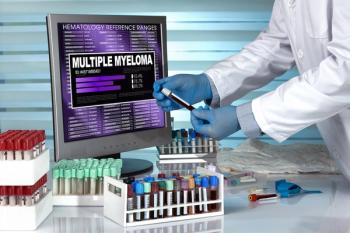
Adherence to INC Treatment for Nasal Polyposis Remains Low
Despite intranasal corticosteroid (INCs) being a treatment mainstay for chronic rhinosinusitis with nasal polyps, there are ongoing high rates of nonadherence, which can affect treatment efficacy, according to this study’s authors.
Investigators are calling for new research that focuses on the nonclinical reasons behind the high rates of treatment nonadherence seen among individuals who have
Findings from a total of 789 patients living with confirmed CRSwNP were published recently in
“CRSwNP is an inflammatory respiratory disorder with a significantly deleterious impact on quality of life,” they wrote. “In developed countries, adherence to long-term therapy for chronic illness is around 50%; consequently, the effectiveness of treatment is severely compromised.”
Data for the present study were provided by patient electronic medical records from Fundación Jiménez Díaz, a public university hospital in Madrid, Spain, following searches for the terms nasal polyps and nasal polyposis from 2016 to 2019. Patients had to have a record of an INC prescription, of which the authors noted 60% of the cost is reimbursed through the Spanish public health system and the mean cost is €3. INC vials picked up from pharmacies were compared with total prescriptions from the hospital’s ENT/allergy department and there were 4 classifications of adherence: more than 0% to 50%, at least 50% to 90% or less, at least 90% to 100%, and more than 100%.
Despite 37% of the patient cohort having undergone endoscopic endonasal surgery (EES), less than one-third overall (31.43%) were prescribed an INC before or during 2019 and even fewer (22%) got systemic corticosteroids in 2018. Data also show that most patients (42.7%) were adherent to their INC treatment—meaning bottles of INCs picked up following a prescription—less than 50% of the time, 33.5% were adherent 50% to 90% of the time, 16.1% were adherent between 90% and 100%, and the least amount of patients, or 4.8%, were more than 100% adherent, meaning they obtained more bottles of INCs than prescribed.
Few patients (2.8%) were 100% nonadherent to INC therapy.
Overall, while the authors found that 97% of their study population received at least 1 bottle of INCs, they note that their findings on 50% adherence echo World Health Organization data “for other chronic diseases, such as asthma, in which nonadherence ranges from 6% to 44%.” In addition, their data demonstrate that polyposis grade had no effect on prescriptions filled and that rates of previous EES, comorbid asthma, visual analog scale score, and history of systemic corticosteroid use did not significantly differ among the adherence groups.
Proposed reasons for the low adherence rates the investigators saw include incorrect information from physicians, a perceived lack of rapid symptom improvement, and the institution of a new electronic prescription system in Madrid in October 2018.
“Adherence to INCs in patients with CRSwNP is low and not related to disease severity,” the authors concluded. “Through the present study, we show the need for new research aimed at discovering the relevant nonclinical reasons for poor adherence to treatment in patients with CRSwNP.”
Reference
Valverde-Monge M, Barroso B, Ortega-Martin L, et al. Exploring adherence to treatment in nasal polyposis. J Investig Allergol Clin Immunol. 2022;32(4):299-301. doi:10.18176/jiaci.0752
Newsletter
Stay ahead of policy, cost, and value—subscribe to AJMC for expert insights at the intersection of clinical care and health economics.













































